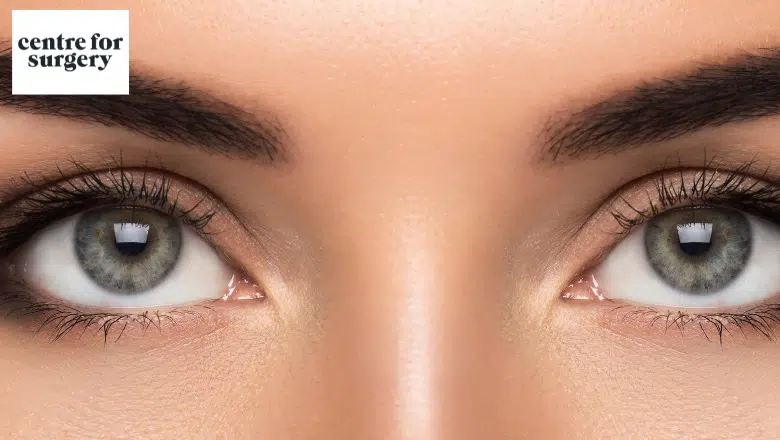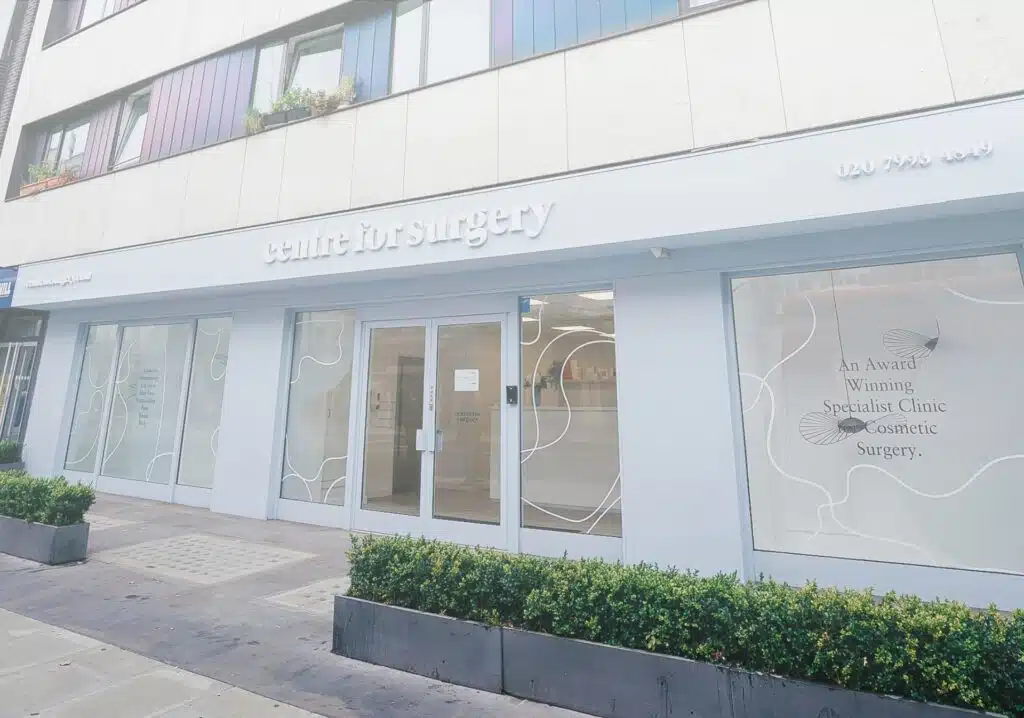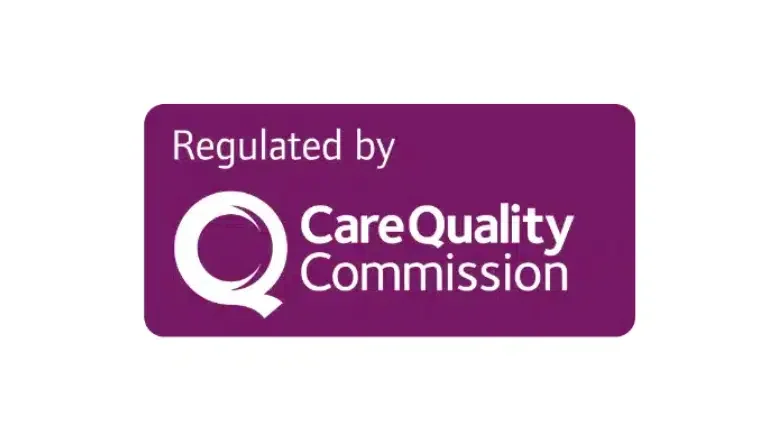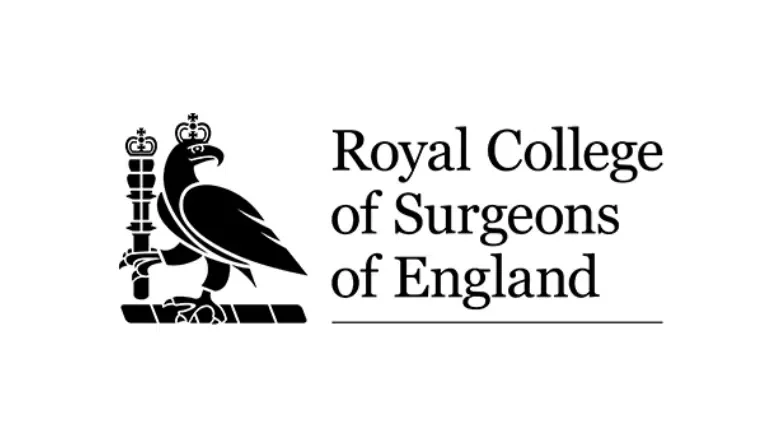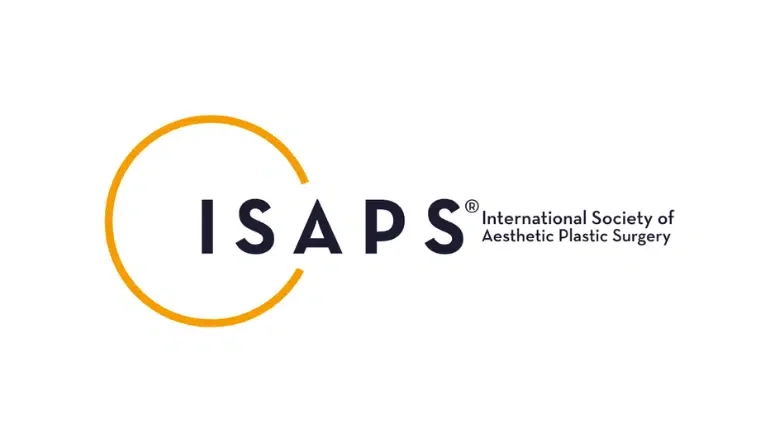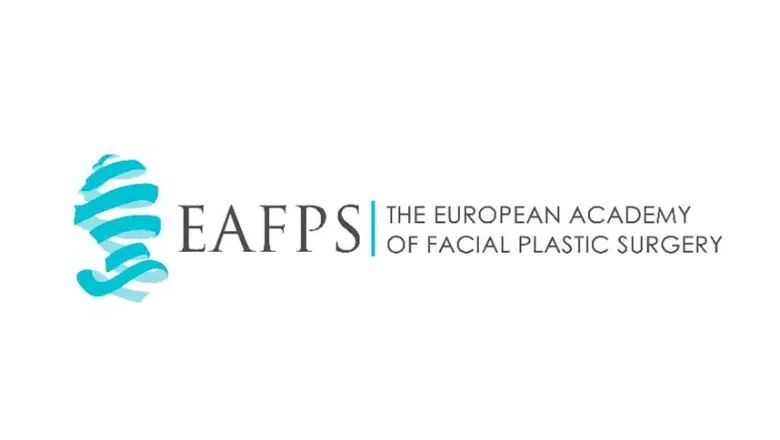Laser Blepharoplasty in London
CO2 Laser Blepharoplasty for Younger-Looking Eyes
Laser blepharoplasty, also known as laser eyelid surgery, is a cosmetic procedure that uses a CO2 laser to remove excess skin and fat from the eyelids. It is a less invasive alternative to traditional blepharoplasty, which involves making incisions in the skin with a scalpel to remove excess tissue. Centre for Surgery in London is one of the leading cosmetic surgery clinics with significant expertise in all types of eyelid surgery, including laser blepharoplasty.
RELATED: Eyelid Rejuvenation Options – Solutions for Younger-Looking Eyes
CO2 Laser Blepharoplasty vs Traditional Scalpel Blepharoplasty
Blepharoplasty is a cosmetic procedure that can be performed using different techniques, including traditional scalpel blepharoplasty and CO2 laser blepharoplasty. While both procedures aim to rejuvenate the appearance of the eyelids, there are some key differences between them.
Traditional Scalpel Blepharoplasty:
Scalpel blepharoplasty is a traditional surgical technique that involves making incisions in the skin to remove excess fat, muscle, and skin from the eyelids. The incisions are typically made in the natural creases of the eyelids, and excess tissue is then removed to create a more youthful, rested appearance. The remaining skin is then tightened and sutured in place.
Scalpel blepharoplasty is a well-established and proven technique used to address a range of cosmetic concerns, including sagging skin, bags under the eyes, and droopy eyelids. The procedure is typically performed under local anaesthesia and requires a recovery period of about a week or two.
CO2 Laser Blepharoplasty:
Laser blepharoplasty is a relatively new technique that utilises a laser to create incisions in the skin and remove excess tissue from the eyelids. The laser is used to remove fat and tissue, as well as to tighten the remaining skin. The laser also seals blood vessels, which reduces bleeding and bruising and speeds up the healing process.
Laser blepharoplasty is less invasive than scalpel blepharoplasty, and the use of the laser results in more precise incisions and less scarring. The procedure is typically performed under local anaesthesia and requires a shorter recovery period than traditional scalpel blepharoplasty.
Key Differences:
One of the key differences between CO2 laser blepharoplasty and scalpel blepharoplasty is the technique used to make incisions. In scalpel blepharoplasty, incisions are made using a surgical scalpel, while in laser blepharoplasty, incisions are made using a laser. The use of a CO2 laser can result in more precise incisions and less scarring.
Another difference is the extent of tissue removal. Scalpel blepharoplasty typically involves more extensive tissue removal than laser blepharoplasty, which can result in a more extended recovery period. Laser blepharoplasty can be a suitable option for patients with mild to moderate cosmetic concerns, while scalpel blepharoplasty may be a better choice for those with more extensive sagging skin or fat deposits.
Am I suitable for Laser Eyelid Surgery?
Laser blepharoplasty is a cosmetic surgical procedure generally recommended for patients experiencing excess skin and fat on their upper and lower eyelids, which can make them appear tired or aged. However, not everyone is a good candidate for CO2 laser blepharoplasty. Here are some factors that may indicate whether you are suitable for the procedure:
Age
Laser blepharoplasty is typically recommended for patients over the age of 35. This is because the skin around the eyes becomes looser and more prone to sagging as we age.
Good Health
Patients should be in good general health, without any underlying medical conditions that could increase the risk of complications during or after the procedure.
Realistic Expectations
Patients should have realistic expectations about the results of the procedure. While laser blepharoplasty can improve the appearance of the eyes, it cannot eliminate wrinkles, dark circles, or other signs of ageing.
Skin Elasticity
Patients should have good skin elasticity, which allows the skin to contract and tighten after the excess fat and skin are removed.
Non-Smokers
Smoking can affect the body’s ability to heal and can increase the risk of complications. Patients should quit smoking before the procedure to minimise the risk of complications.
Eye Conditions
Patients with certain eye conditions, such as dry eye syndrome, glaucoma, or a detached retina, may not be suitable for laser blepharoplasty.
RELATED: Can blepharoplasty cause dry eyes?
Schedule a consultation with a qualified and experienced eyelid surgeon at Centre for Surgery to determine whether you are a suitable candidate for CO2 laser blepharoplasty. Our surgeon will evaluate your medical history, perform a physical examination, and discuss your goals and expectations before recommending the best course of treatment.
What Happens During a Laser Blepharoplasty?
Laser blepharoplasty is a surgical procedure that utilises a laser to remove excess skin and fat from the upper and lower eyelids. The procedure is performed under local anaesthesia and takes about 1-2 hours to complete.
RELATED: What does eyelid surgery involve?
Here is a detailed breakdown of what happens during a laser blepharoplasty:
Anaesthesia
The patient is given local anaesthesia to numb the area around the eyes.
Incisions
The surgeon makes small incisions along the natural creases of the upper and lower eyelids.
Laser resurfacing
The CO2 laser is used to remove excess skin and fat from the eyelids. The laser also helps to tighten the skin around the eyes.
Suturing
The surgeon uses very fine sutures to close the incisions. These sutures will be removed a few days after the surgery.
What To Expect During Recovery After CO2 Laser Blepharoplasty
After the laser blepharoplasty procedure, the recovery period is an essential time to ensure the best possible results. Here are some things to expect during laser blepharoplasty recovery:
Swelling and Bruising
It is common to experience swelling and bruising around the eyes after eyelid surgery. This can last for up to two weeks but can be managed with ice packs, pain medication, and head elevation.
Eye Irritation
The eyes may feel dry, itchy or irritated following the procedure. Eye drops or ointments can be prescribed to help alleviate these symptoms.
Activity Restrictions
Strenuous activities, such as heavy lifting, exercise, or bending over, should be avoided during the first week of recovery.
Sutures
Sutures are typically removed within five to seven days after surgery.
RELATED: How Long Does It Take for Stitches to Dissolve after Blepharoplasty?
Makeup
Patients should avoid wearing makeup around the eyes until the incisions have completely healed.
Follow-Up Visits
Patients will be required to attend follow-up appointments with their surgeon to monitor the healing process and ensure that the desired results have been achieved.
RELATED: How long is blepharoplasty recovery?
What Are the Results of Laser Blepharoplasty?
The specific results will vary depending on the individual’s unique anatomy and the extent of the procedure. Generally, laser blepharoplasty can improve the appearance of under-eye bags, reduce the appearance of wrinkles and fine lines, and create a more defined eyelid crease. It can also improve vision if sagging eyelid skin obstructs the line of sight.
What are risks and potential complications of laser blepharoplasty?
While laser blepharoplasty is a generally safe and effective procedure, there are potential risks and complications that should be taken into account. These can include:
Bleeding
There may be some minor bleeding during or after the procedure, but this is usually minimal and can be managed with compression or medication.
Infection
Any surgical procedure carries the risk of infection. Patients should be aware of the signs of infection, such as fever, redness, or the presence of pus around the incision sites.
Scarring
While laser blepharoplasty can reduce the appearance of scarring, there remains a risk of visible scars around the incision sites.
Dry Eyes
Laser blepharoplasty can sometimes lead to dry eyes, which can be managed with eye drops or other medications.
Vision Changes
In rare cases, laser blepharoplasty can cause temporary or permanent visual disturbances. Patients should contact their surgeon immediately if they experience any changes in their vision.
Numbness or Tingling
Some patients may experience numbness or tingling around the incision sites. This is usually a temporary condition that resolves on its own.
Asymmetry
Sometimes, the procedure’s results may be asymmetrical or not match the patient’s expectations.
How much does a CO2 laser blepharoplasty cost in London?
The cost of CO2 laser blepharoplasty in London can vary depending on several factors, including the surgeon’s experience and reputation, the complexity of the procedure, and the clinic’s geographical location. The cost may also vary depending on whether the procedure is performed on the upper eyelid, the lower eyelid, or both. A specialist oculoplastic surgeon at Centre for Surgery performs laser blepharoplasty surgery. CO2 Laser blepharoplasty generally costs more than a traditional scalpel blepharoplasty due to the expense of the laser technology used and the specialist expertise of a dedicated surgeon who operates only on the eyelids and upper face.
In general, the cost of laser blepharoplasty in London ranges from approximately £ 5,000 to £ 6,000, which is higher than that of a scalpel blepharoplasty. However, this is only an estimate, and the actual cost may be higher or lower depending on the individual case. The cost typically does not include additional expenses such as consultation fees, pre-operative tests, anaesthesia, and post-operative care.
To get a more accurate estimate of the cost of CO2 laser blepharoplasty in London, it’s best to schedule a consultation with a qualified oculoplastic surgeon at Centre for Surgery. During the consultation, the surgeon can evaluate your specific needs and goals, and provide you with a personalised treatment plan and a more accurate cost estimate. It’s also a good opportunity to discuss any concerns or questions you may have about the procedure.
Laser Blepharoplasty at Centre for Surgery
Centre for Surgery in London is considered the leading cosmetic surgery clinic in the UK. We perform over 100 blepharoplasty procedures each year at our state-of-the-art Baker Street clinic in Marylebone. CO2 laser blepharoplasty results in less bleeding and bruising and a quick recovery, compared with a traditional scalpel blepharoplasty. If you would like to find out if you are suitable for laser eyelid surgery, get in touch with us today at 020 7993 4849 or complete the contact form below. One of our friendly and knowledgeable patient coordinators will arrange an in-person consultation with a specialist oculoplastic surgeon.
FAQs
-
Why use CO2 laser for blepharoplasty?The CO2 laser is a popular tool used during blepharoplasty surgery for several reasons. Firstly, the laser allows for a more precise incision, reducing the risk of scarring and damage to surrounding tissues. Additionally, the laser helps to minimise bleeding during the procedure, which can result in a faster and smoother recovery for the patient.
The CO2 laser can also be used to tighten and smooth the skin around the eyes, which can enhance the overall results of the surgery. The laser is able to stimulate collagen production, which can lead to firmer, more youthful-looking skin. -
Is CO2 laser blepharoplasty painful?Laser blepharoplasty, a type of eyelid surgery, is typically performed under local anaesthesia and sedation, which helps to minimise discomfort during the procedure. After the surgery, some discomfort, swelling, and bruising in the treated area can be expected, but pain can usually be managed with over-the-counter or prescription pain medication.
-
Is CO2 laser blepharoplasty safe?CO2 laser blepharoplasty is generally considered to be a safe and effective procedure when performed by a skilled and experienced surgeon. The use of CO2 laser technology can offer several advantages over traditional surgical techniques, such as increased precision, reduced bleeding and swelling, and improved healing times.
However, as with any surgical procedure, there are potential risks and complications associated with CO2 laser blepharoplasty. These may include infection, scarring, uneven results, and changes in vision.
The use of CO2 laser technology is not appropriate for all patients. Your surgeon will evaluate your individual case and determine whether CO2 laser blepharoplasty is the right choice for you based on factors such as the extent of the procedure, your overall health, and any underlying medical conditions you may have. -
Is recovery quicker after CO2 laser blepharoplasty?Recovery after CO2 laser blepharoplasty may be quicker than traditional surgical techniques due to several factors. Firstly, the use of the laser allows for a more precise incision and reduced bleeding during the procedure, which can result in less tissue trauma and a quicker healing process.
Additionally, the laser helps to stimulate collagen production, which can lead to faster healing and improved skin quality. The CO2 laser also seals blood vessels during the procedure, which reduces swelling and bruising and can result in a more rapid recovery time.
The recovery time after CO2 laser blepharoplasty can vary depending on the extent of the procedure and individual factors such as age, overall health, and lifestyle habits. -
What scarring can I expect after CO2 laser blepharoplasty?Laser blepharoplasty, like any surgical procedure, can result in scarring. However, the use of a laser can help minimise scarring compared to traditional surgical techniques. Laser blepharoplasty involves making small incisions in the eyelids that are typically well-concealed within the natural creases of the skin. The laser also seals blood vessels as it cuts, which can reduce bleeding and bruising and promote faster healing.
After the surgery, some scarring is expected, but it usually fades and becomes less noticeable over time. Additionally, scarring can be minimised by following post-operative care instructions provided by your surgeon, such as avoiding sun exposure, not smoking, and keeping the treated area clean and moisturised.


